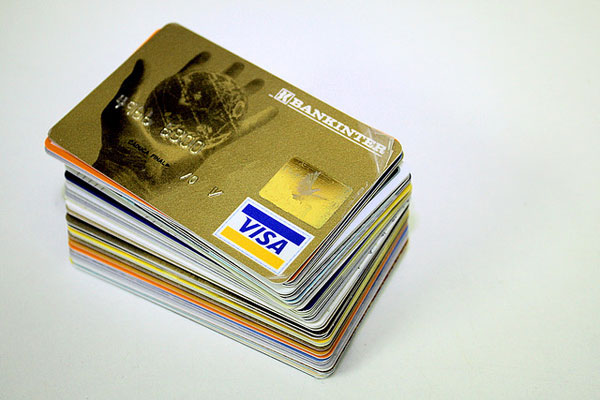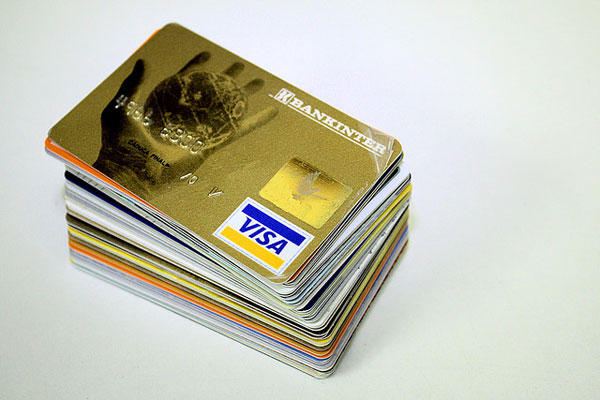
Sometime in the late 1950s, my parents sat at their dining room table with a traveling salesman who had come to sell them an encyclopedia on a weekly payment plan. Though already saddled with debts for housing, furniture, and a car, my parents, both of whom were factory workers, thought the books were worth it if they could jump-start the kids to college. I don’t know if the encyclopedia performed its advertised magic, but at least my parents never defaulted.
A lot of us would see virtue in my parents’ debts, which were aimed at building a comfortable and well-educated family. But in the finger pointing over the causes of the Great Recession, all debt was vice. American borrowers had gone on what David Brooks called a “consumption binge.” We had “no compunction about squandering [our] savings and spending,” according to former Morgan Stanley economist Stephen Roach. In the heyday of the foreclosure crisis, many, most dramatically CNBC analyst Rick Santelli in his rant about paying for the mortgages of spendthrift neighbors, objected to helping out homeowners who were underwater. They deserved, critics said, to drown financially.
Suspicion of debtors was not born with the Great Recession, of course. The stated purpose of a federal law passed in 2005 to tighten bankruptcy options was “restoring personal responsibility and integrity” by ensuring “that debtors repay creditors the maximum they can afford” (emphasis added). In the 1970s Daniel Bell bemoaned the installment plan, which he called “the single greatest engine in the destruction of the Protestant ethic” of self-discipline. “With credit cards one could indulge in instant gratification.” Criticism of indebted spenders runs back to the beginnings of the nation.
Running up debt is as American as the founding fathers. So is fleeing from it.
So does enthusiastic borrowing. Running up debt is as American as, well, the founding fathers. “Financier of the American Revolution” Robert Morris spent time in debtors’ prison, and Thomas Jefferson died in debt. Young George Washington had such difficulty with his own debts that he later scolded others: “There is no practice more dangerous than that of borrowing money,” he wrote in a letter to his brother Samuel. “It comes easy and is spent freely, and many things indulged in that would never be thought of, if to be purchased by the sweat of the brow.”
Yet the nation was built on debt. Many Europeans borrowed for passage to the colonies and then labored for years as indentured servants to repay creditors. Farmers constantly borrowed from neighbors, merchants, and later from banks for land and stock. (That is what the hard-versus-soft-money political battles of the nineteenth century were about: farmers trying to pay back loans with dollars devalued by inflation.) The classic country store ran—and often failed—on the extension of credit to customers. Urban workers turned to informal pawnbrokers for cash to tide them over between paydays or gaps in employment. Much of our infrastructure, from the Erie Canal to city water systems, was built on public debt and much, such as city trolley lines, on private debt. The 1950s American dream entailed, at minimum, a home mortgage and a car loan.
Our ancestors took on debt not just for practical business reasons such as sowing the next crop, but also for consumption and indulgence. European fashions arrived on American shores only because storekeepers had credit lines in London, and many shoppers could take those items home only because the storekeepers extended them credit. Colonial merchants’ newspaper ads boasted not only of the variety of goods they sold but of the easy payment terms they offered. Leading observers of the day complained about popular extravagances. “For the pleasure of taking tea in the parlor, more than a few families were content to continue pissing in the barn,” historian Cary Carson notes in his examination of the craze for expensive tea and place settings among the Colonial-era poor. Over the nineteenth century, more kinds of consumer debt, increasingly provided by professional lenders rather than neighbors or local merchants, became available. By 1890 the average American household owed at least $880, worth roughly $16,000 today and about twice what the average worker earned in a year. Department store charge plates, auto financing, and credit cards were yet to come.
Fleeing one’s debts is also an old American custom. Many of Washington’s and Jefferson’s fellow Virginia planters bolted for Kentucky after the Revolution to escape their English creditors. Texas founding father Stephen Austin acknowledged in 1828 that most of the American “immigrants to Texas owe debts in the country from which they came.” Many had skipped town leaving “G.T.T.” (“gone to Texas”) written on their doors for the debt-collecting sheriff. Laws of the Texas Republic strained to protect debtors. And immigrant wives all over the country were left with debts as men abandoned their families. In a 1910 letter to The Forward, a Jewish woman pleaded, “My husband . . . deserted me and our three small children, leaving us in desperate need. I was left without a bit of bread for the children, with debts in the grocery store and the butcher’s, and last month’s rent unpaid.”
It might appear, then, that this American tradition of borrow and spend (and run) explains our recent financial disaster. Some seem to think so, pointing to the growth in credit card debt in the years before the collapse. But the numbers suggest otherwise. Today’s underwater debtors—like yesterday’s, who were deadbeats through drought, depression, and accident—may more often be victims than sinners.
The Americans who couldn’t get a bailout took on loans for what they thought were the right reasons. Yes, between 1989 and 2007, with more and more businesses accepting credit cards, Americans roughly tripled their credit card debt, a $2,300 rise in outstanding balances per family. But the swell of debt is almost entirely accounted for by the cost of housing, which grew as more Americans became homeowners. In those same years, 1989 to 2007, Americans increased their mortgage debt by an average of $46,000 per family. One may protest that Americans bought “too much house,” but in an era of stagnant wages, houses stood out as good investments. And, until the bubble burst, they were. Americans were not engaged in a bacchanal of self-indulgent borrowing. The percentage of family debt incurred for “goods and services” hardly changed between 1989 and 2007. Americans were buying—or borrowing—into the smart-money strategy of real estate ownership.
After the bubble burst, between 2007 and 2010, credit card balances dropped by about $800 and mortgage debt by about $3,500 per family. The biggest change lately in the debt burden has been a rapid increase in borrowing for education, which is also investment rather than consumption, and is driven not by private habits of excess but by college and state government budgets.
Critics of borrowing, such as those who drafted the 2005 bankruptcy law, are right that many people are irresponsible with credit. Those who admit their irresponsibility can even find twelve-step support groups. But the balance of power lies overwhelmingly with lenders, especially these days when it is harder to be G.T.T. in order to skip one’s debts. A really big debtor, on the order of a Jefferson or the U.S. Treasury, can still get away with it.
Credit and debt are central features of modern life (David Graeber, in his 2011 book Debt: The First 5,000 Years, would say of all human life). They are essential to the economy as a whole, as the tepid recovery on the shoulders of once-burnt-twice-shy lenders has shown. And, used appropriately, credit and debt allow the not-wealthy to build for the future—by purchasing a car to drive to work, taking on a college loan, or buying an encyclopedia—and to enjoy life sooner rather than later. For all the foolishness of many spenders, we should be concerned less with Americans’ consumerist psyches than with the rigged credit arrangements that trap even the prudent among us.
Image: Fotero.








